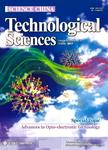Contributions of distinct prefrontal neuron classes in reward processing
Contributions of distinct prefrontal neuron classes in reward processing作者机构:Institute for Cognitive NeurodynamicsEast China University of Science and Technology Brain Science InstituteTamagawa UniversityTamagawagakuen 6-1-1MachidaTokyo 194-8610Japan
出 版 物:《Science China(Technological Sciences)》 (中国科学(技术科学英文版))
年 卷 期:2014年第57卷第6期
页 面:1257-1268页
核心收录:
学科分类:0710[理学-生物学] 07[理学] 071006[理学-神经生物学]
基 金:supported by Grant-in-aid for Scientific Research on Innovative Areas,Grant-in-aid for Scientific Research(A),and Tamagawa Global Center of Excellence,Japan the National Natural Science Foundation of China(Grant No.11232005) the Fundamental Research Funds for the Central Universities of China Shanghai Pujiang Program(Grant No.13PJ1402000)
主 题:prefrontal cortex reward pyramidal neuron interneuron monkey single-unit activity
摘 要:The prefrontal cortex(PFC)is thought to be involved in higher order cognitive functions,such as in working memory,abstract categorization,and reward *** has been reported that two distinct neuron classes(putative pyramidal cells and interneurons)in the PFC played different functional roles in neural circuits involved in forming working memory and abstract ***,it remains elusive how the two types of neurons process reward information in the *** investigate this issue,the activity of single neurons was extracellularly recorded in the PFC of the monkey performing a reward predicting *** neurons were classified into putative pyramidal cells and interneurons,respectively,based on the waveforms of action *** the two types of neurons encoded reward information and discriminated two reward conditions(the preferred reward condition *** nonpreferred reward condition).However,the putative pyramidal neurons had better and more reliable discriminability than the putative ***,the pyramidal cells represented reward information in the preferred reward condition,but not in the nonpreferred reward condition by raising their firing rates relative to the baseline *** contrast,the interneurons encoded reward information in the nonpreferred reward condition,but not in the preferred reward condition by inhibiting their discharge rates relative to the baseline *** results suggested that the putative pyramidal cells and interneurons had complementary functions in reward *** findings may help to clarify individual functions of each type of neurons in PFC neuronal circuits involved in reward processing.




